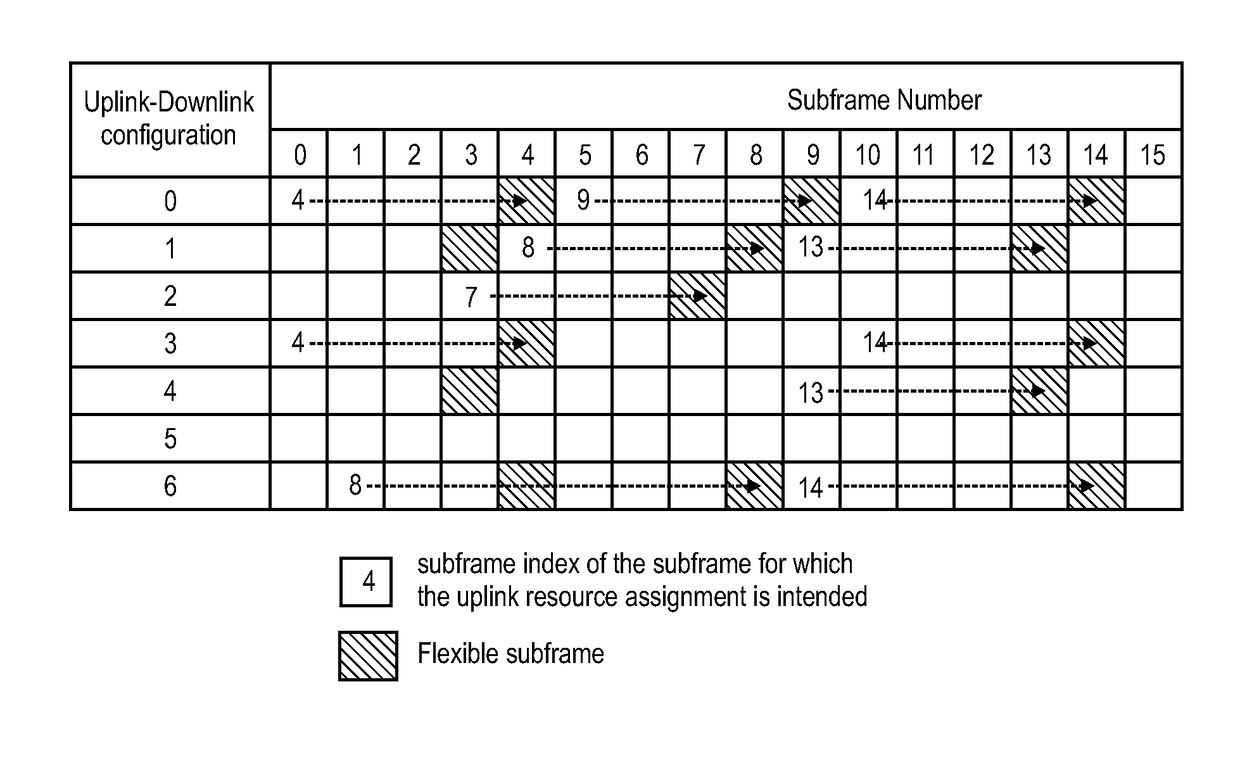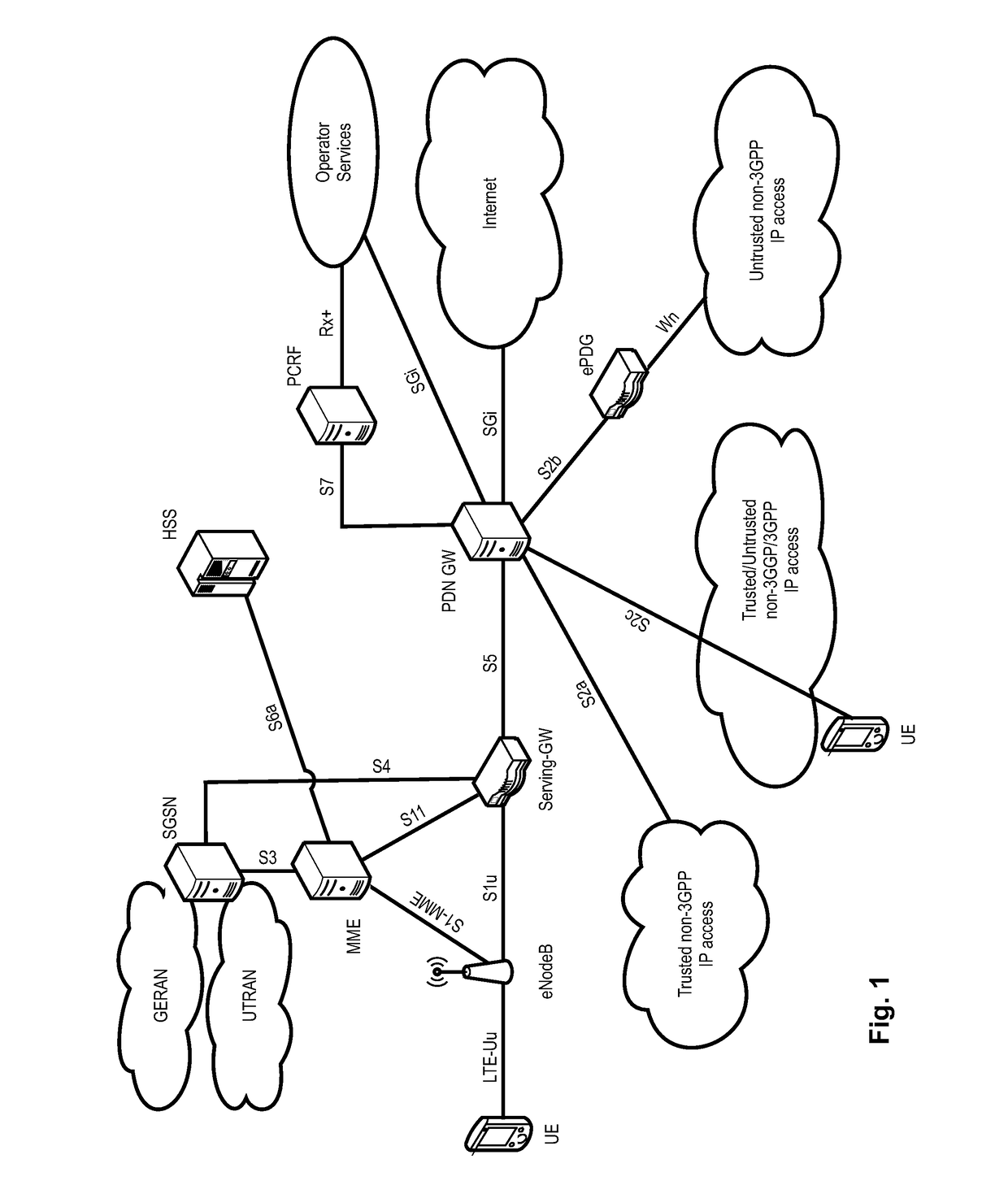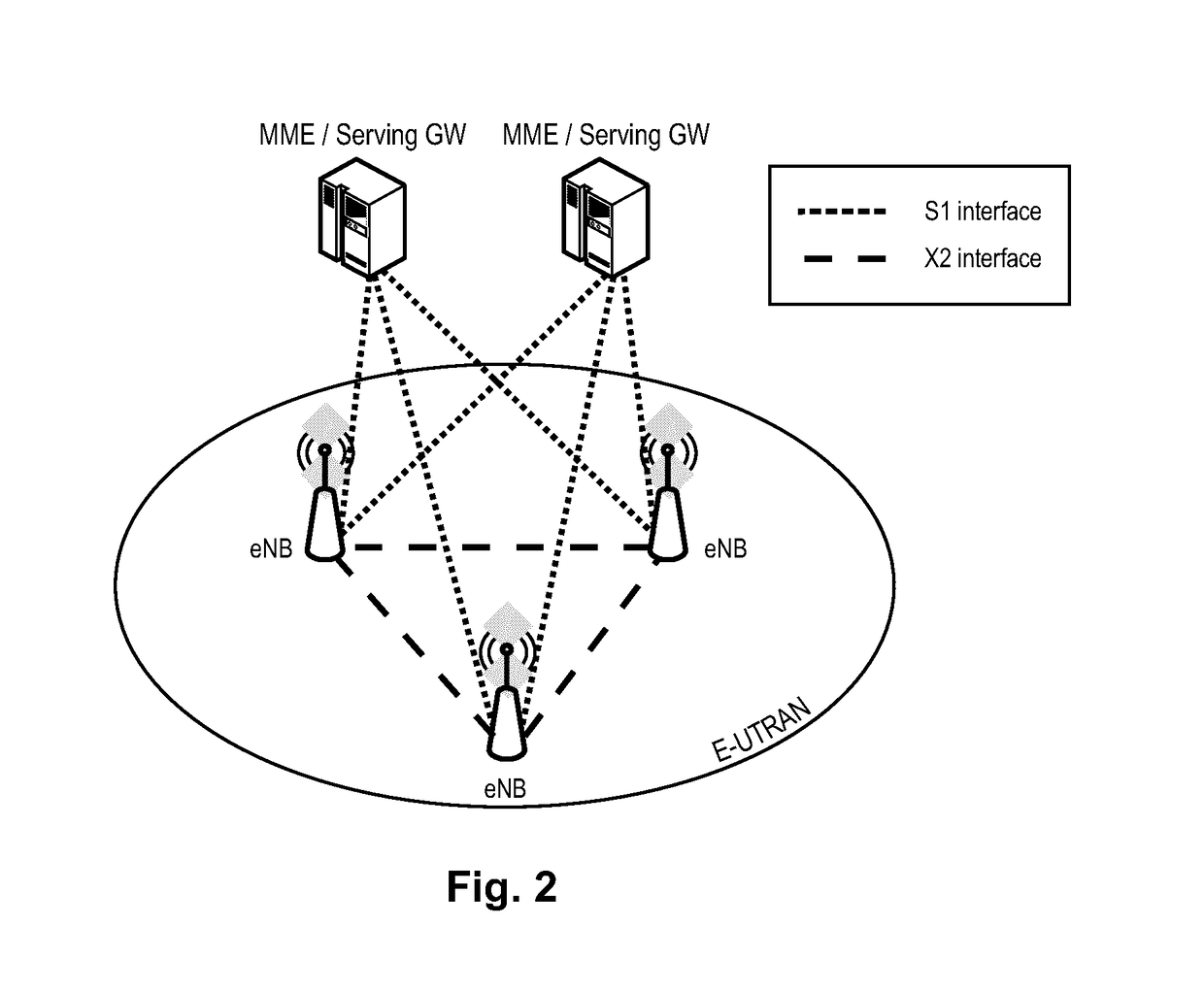Flexible TDD uplink-downlink configuration with flexible subframes
a subframe and flexible technology, applied in the direction of multi-channel communication, transmission path division, duplex signal operation, etc., can solve the problem of insufficient fdd uplink control signaling (pucch) formats to carry additional ack/nack information, increase comes at the cost of a required hybrid arq soft-buffer at the receiver, etc. problem, to achieve the effect of better adapting to current traffic and better adapting to traffi
- Summary
- Abstract
- Description
- Claims
- Application Information
AI Technical Summary
Benefits of technology
Problems solved by technology
Method used
Image
Examples
first embodiment
[0165]A first set of embodiments of the invention mainly relates to the definition of the flexible TDD configuration, and in particular to how a flexible subframe can be introduced into the TDD configuration(s). Until now a static TDD configuration defines uplink, downlink and special subframe on a radio frame basis, and with a periodic pattern of 5 ms or 10 ms. The uplink subframes can only be used for uplink communications, and conversely the downlink subframes only for downlink communications. Therefore, the TDD configurations are rather fix and static. The change between the seven available TDD configurations is slow, and not practicable for adapting the TDD operation to fast changing traffic conditions.
[0166]By introducing at least one flexible subframe in each radio frame, i.e. by defining at least one flexible subframe in a flexible TDD configuration, it is possible to make the TDD operation more flexible; the flexible subframe may be used as a downlink or uplink subframe.
[01...
second embodiment
[0213]The second embodiment of the invention deals with the determination of whether a flexible subframe is used as a downlink or uplink subframe. This second embodiment shall be regarded independent from the first embodiment, since the concept of how a flexible subframe is actually used, i.e. for downlink or uplink, is independent from the concept of how exactly a flexible TDD configuration is defined and indicated. Of course, the first and second embodiments may also be used in any combination.
[0214]For the proper use of a flexible TDD configuration and for taking maximum advantage of the flexible subframes, it is important that the UE and the eNodeB have the same understanding of how a particular flexible subframe is to be used. This helps to avoid a waste of resources, in those cases where the UE and the eNodeB (want to) use the flexible subframe differently. In general, an explicit indication by the eNodeB to the UE or an implicit agreement on both sides may allow having the sa...
further embodiment
[0251]These further embodiments of the invention relate to the question of how to handle uplink transmissions that would be transmitted in a flexible subframe. Although these embodiments are closely related to the first and second embodiments explained above, they shall be nonetheless treated mostly separately and independently from the various first and second embodiments. Most of the processes and concepts explained in the following do not need a particular flexible TDD configuration to work, or a particular determination of a flexible downlink / uplink subframe; rather, these concepts can applied universally in the context of flexible TDD configurations. Still of course, the following embodiments can be used in any appropriate combination with the first and second embodiments.
[0252]As explained in the context with the second embodiment, there may be various different types of uplink transmissions that may be potentially pending for flexible subframe. For one variant of the second e...
PUM
 Login to View More
Login to View More Abstract
Description
Claims
Application Information
 Login to View More
Login to View More - R&D
- Intellectual Property
- Life Sciences
- Materials
- Tech Scout
- Unparalleled Data Quality
- Higher Quality Content
- 60% Fewer Hallucinations
Browse by: Latest US Patents, China's latest patents, Technical Efficacy Thesaurus, Application Domain, Technology Topic, Popular Technical Reports.
© 2025 PatSnap. All rights reserved.Legal|Privacy policy|Modern Slavery Act Transparency Statement|Sitemap|About US| Contact US: help@patsnap.com



